Standing atop a towering peak of Yosemite National Park, the air lacks oxygen, the land lacks life, and the trails lack humans.
If I didn’t know any better, I’d have no clue that only twenty miles as the crow flies to the southwest there is a valley, a spectacular one at that, teeming with humans and civilization. There’s a grocery store selling ice cream sandwiches. Starbucks cappuccinos are prepared for drowsy visitors. Elegantly dressed waiters carefully pour wine in hopes of a justifiable tip.
But still, standing atop that mountain, if no one ever told me of the civilization, I’d never know it.
It’s these two worlds that make Yosemite a land of stark contrasts. On one hand, you have the bustling, glacier-carved Yosemite Valley, which receives the majority of the park’s six million yearly visitors. On the other hand, you have towering mountain peaks, isolated terrain, and land that belongs to no one but the wild bears and deer.
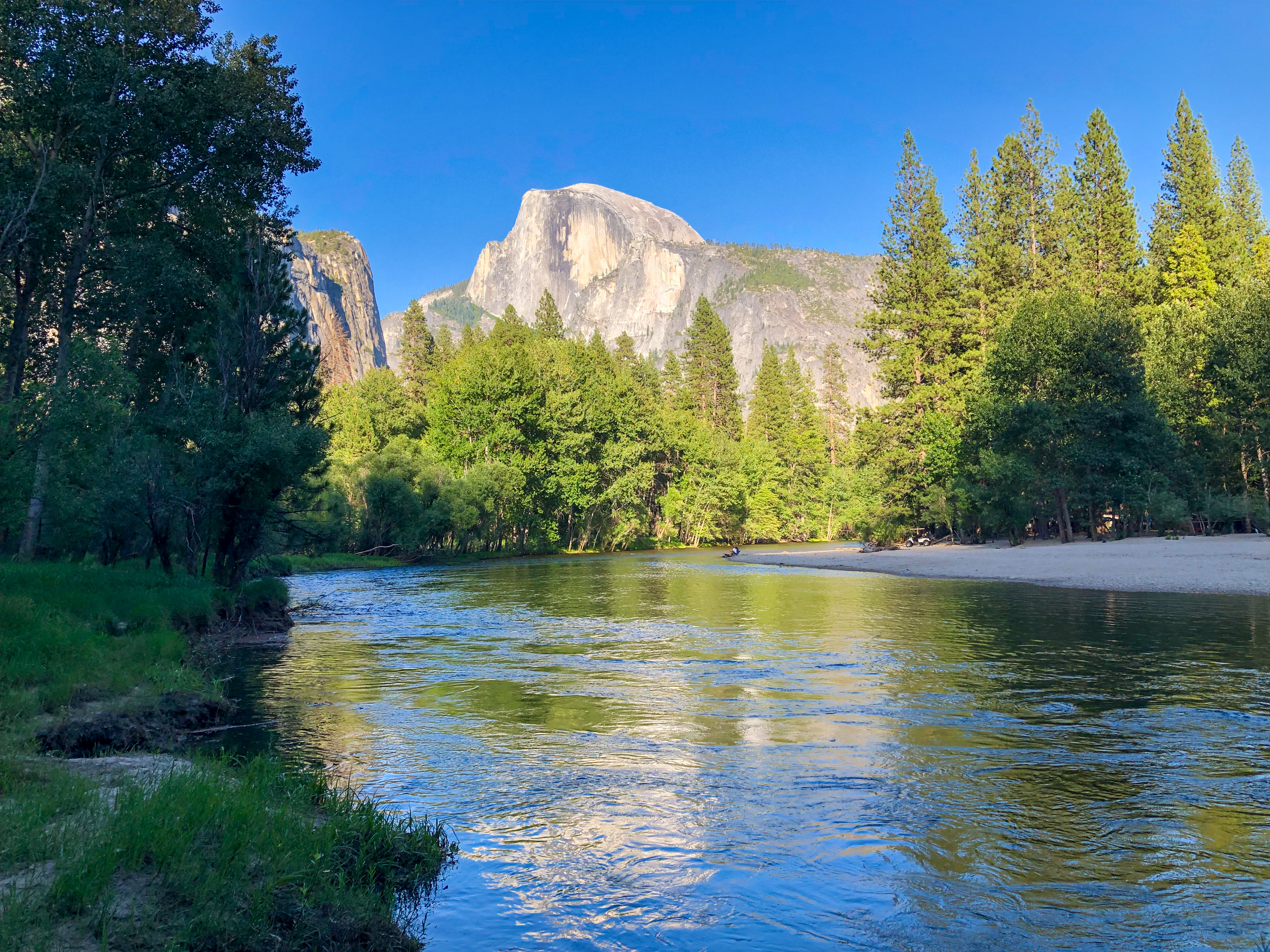
The Sierra Nevada is full of beauty, but there is a unique magic to the sheer scale and utter impressiveness of Yosemite’s domes, peaks, valleys, rivers, and waterfalls, all crammed into a relatively small sliver of this immense range of mountains.
It’s this postcard beauty that keeps me (and everyone else) coming back.

After a three-year gap between Yosemite (summer) visits, it was time for a return. But instead of solely swimming among the crowds in the valley, this trip I wanted to experience the polar extremes of Yosemite: A day hiking the popular trek up to Half Dome, complemented and followed by three days in the remote eastern end of the park among the isolated peaks, valleys, lakes, and mountain passes.
It was a trip to taste the best of both worlds that the park has to offer.
Half Dome: The third time’s a charm
I’ve hiked Half Dome twice before, once in 2012 and again in 2015. It’s a unique combination of distance and elevation that will also test your fear of heights. The final ascent up the ‘cables’ allows you to scale an otherwise impossible section of steep, slick granite. My sister Anne and girlfriend Madison had never done the hike, so I was happy to do it again and share the experience with them. It’s definitely a hike that any serious hiker should check off the bucket list at some point in life.
I’ve learned a few things after summiting Half Dome twice that made it a bit easier on us. For example, if you bring a water purifying tool, you can save yourself a significant amount of pack weight both going up and coming down. I’m not sure if it was due to carrying less water weight, or just have been more consistently doing long hikes this year, but this time around Half Dome felt much easier than it had in the past.
[gallery size="full" type="rectangular" ids="13227,13226,13222,13223"]
It took us about twelve hours round trip, but my muscles didn’t quite have the same memorable pain that I had the previous times that I completed the hike.
Half Dome falls on the busy, crowded side of the spectrum that I was talking about in Yosemite. Only 225 permits are awarded to those day-hiking the cables, but you form very intimate relationships with many of those people as the trail bottlenecks on the cables. The hiking pace slows down to a standstill as two-way traffic cautiously negotiates the slick rock path.
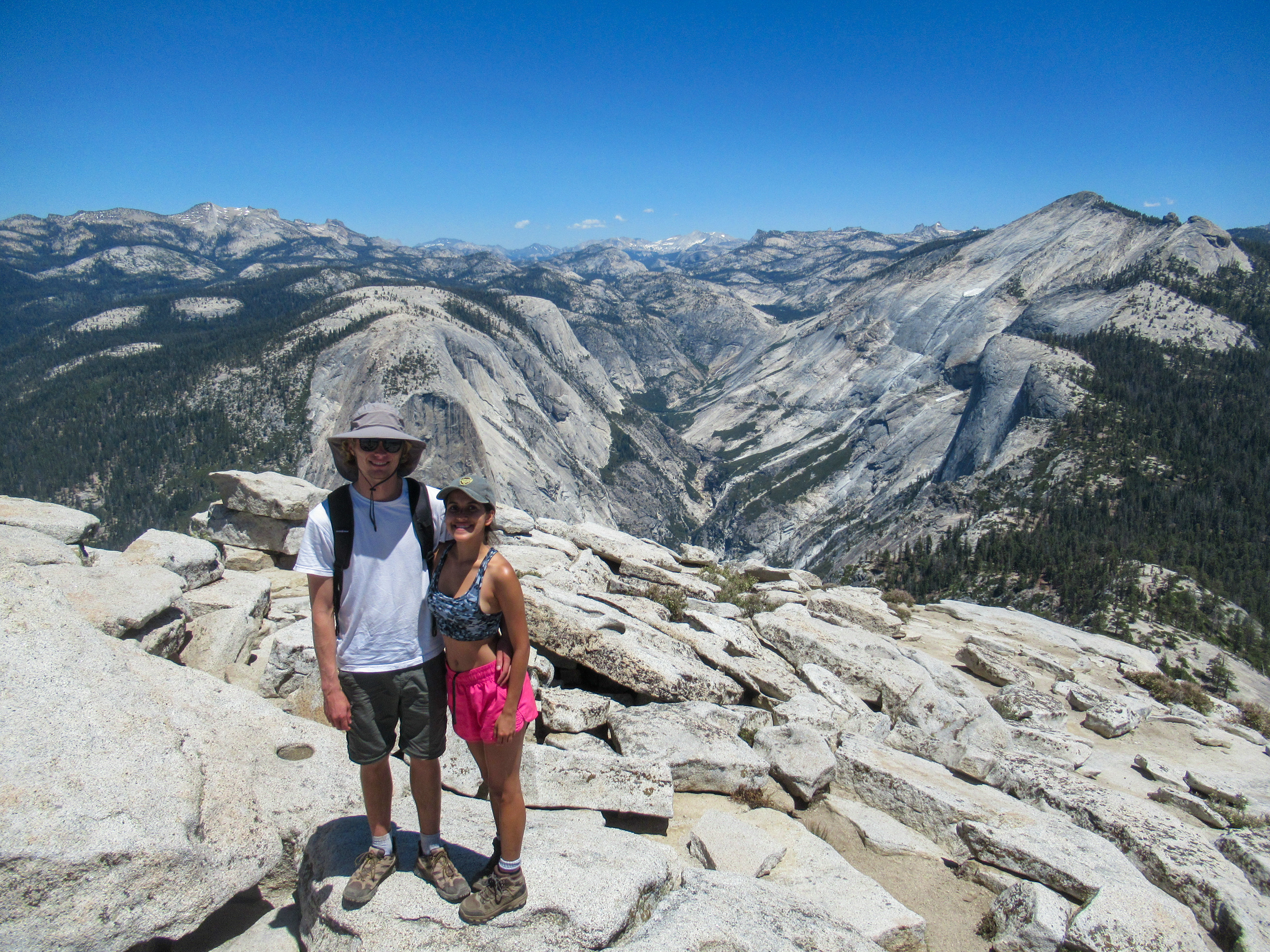
We completed Half Dome without a hitch, checking off our list the most iconic hike in the park, or maybe even of the state for that matter. But Half Dome was just a warm-up for our plans to get away to a more remote trek into the wilderness of Yosemite.
The next three days were to be spent backpacking above 10,000 feet off the Mono Pass Trail, hugging the dramatic eastern edge of the Sierra Nevada. This would be our chance to search for Yosemite’s ‘roads less travelled’ that we had been yearning for.
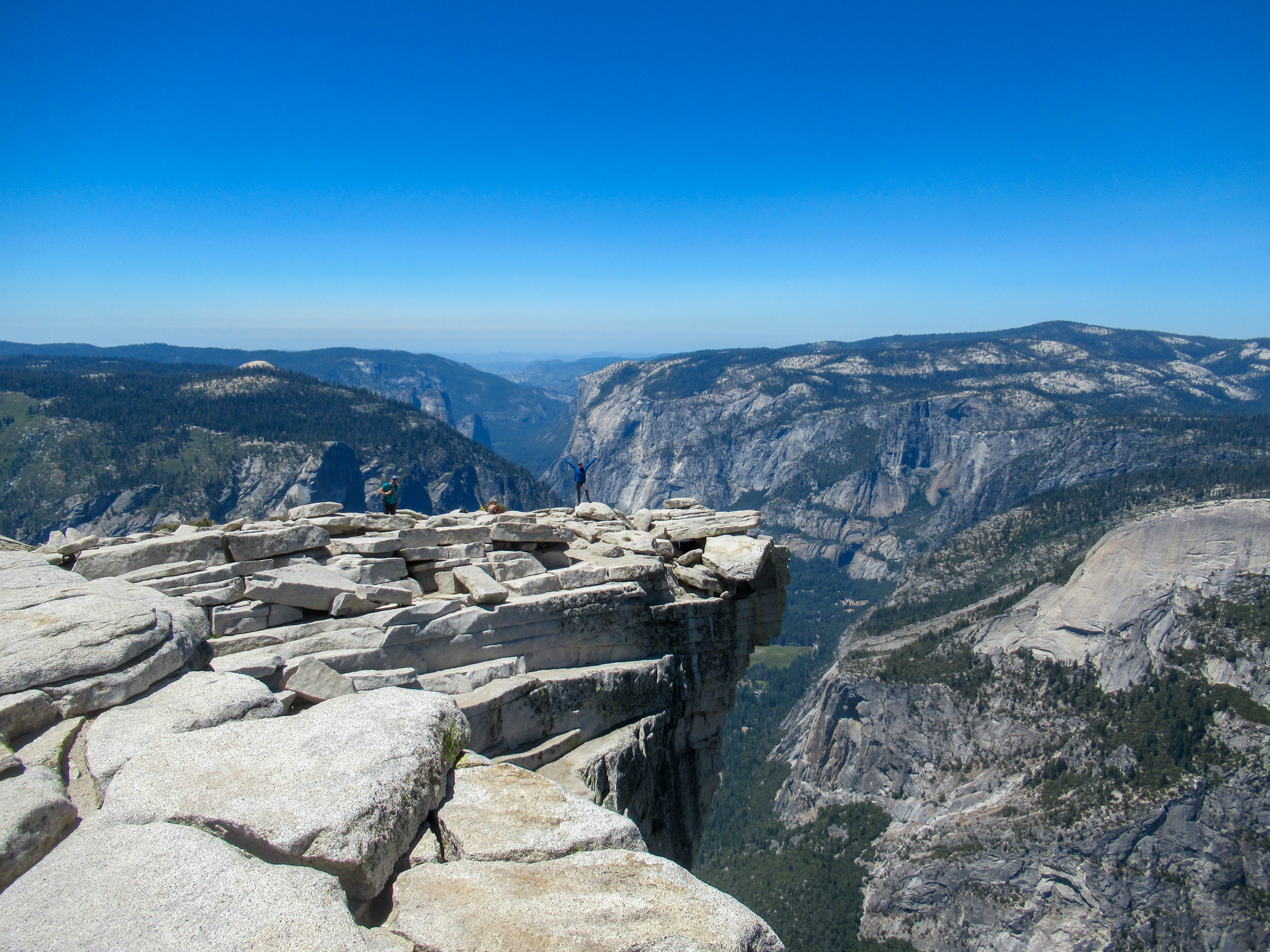
Vernal Fall was flowing pretty good for late July — a result of the heavy snowpack from the winter.
Up and over Parker Pass
Our three days and two nights spent in the wilderness would commence from Tioga Pass and see us go up and over the 11,100-foot Parker Pass on our first day. A longtime friend, Kai, and his girlfriend, Kiara, joined us for this hike, making us a solid group of five.
"You don’t want to train a bear to correlate backpackers with an attainable food source."
Yosemite backcountry trips start off with picking up a permit and receiving an orientation-like speech from a park ranger. A ranger, tall and thin as a stick with a bushy brown beard, gathered the group of hikers picking up permits. The man, who I could not picture doing any other job on the planet, spoke through the shadow cast by his wide-brim ranger hat about the do’s and don’t’s of hiking in the backcountry.

The name of the game is learning how to protect the bears from you. The bears themselves are not thought of as dangerous, but mismanaging your food is a problem because it trains bears to follow humans for food and makes them ‘problem’ bears that run the risk of getting put down if any altercations occur. This was actually my first backpacking trip in bear country. My handful of trips before this one had always been in non-bear areas, so I learned a thing or two from this orientation. Everything that has a scent — food, toothpaste, deodorant, sunscreen, etc. — needs to be put into a bear canister, which is a tough, cylindrical container that has a bear-proof locking system.
The point of the bear canister is not to keep bears away. A bear’s sense of smell makes a dog’s look like amateur business, so keeping a bear away from your food is nearly impossible. The goal is to not let the bear actually get into your food. You don’t want to train a bear to correlate backpackers with an attainable food source.

As uneasy as it sounds to have a box full of bear-attracting items next to you, awake or asleep, you can’t actually let the bear canister get beyond your reach. You need to scare bears away that get any smart ideas with your canister, for bears have been known to roll them away, throw them off cliffs, or just do mischievous things with these canisters when they don’t feel the threat of humans.
So, bear canisters packed and spirits high, our group of five set out from the safety of our parked vehicles into the wilderness in search of the solitude of Yosemite.
Our goal for day one was to climb up and over Parker Pass in search of an adequate campsite that would serve as a basecamp to out and back the 12,968-foot Koip Peak the following morning. We had about six miles and a little over a thousand feet of elevation to climb, a relatively mellow hike as far as backpacking trips go.
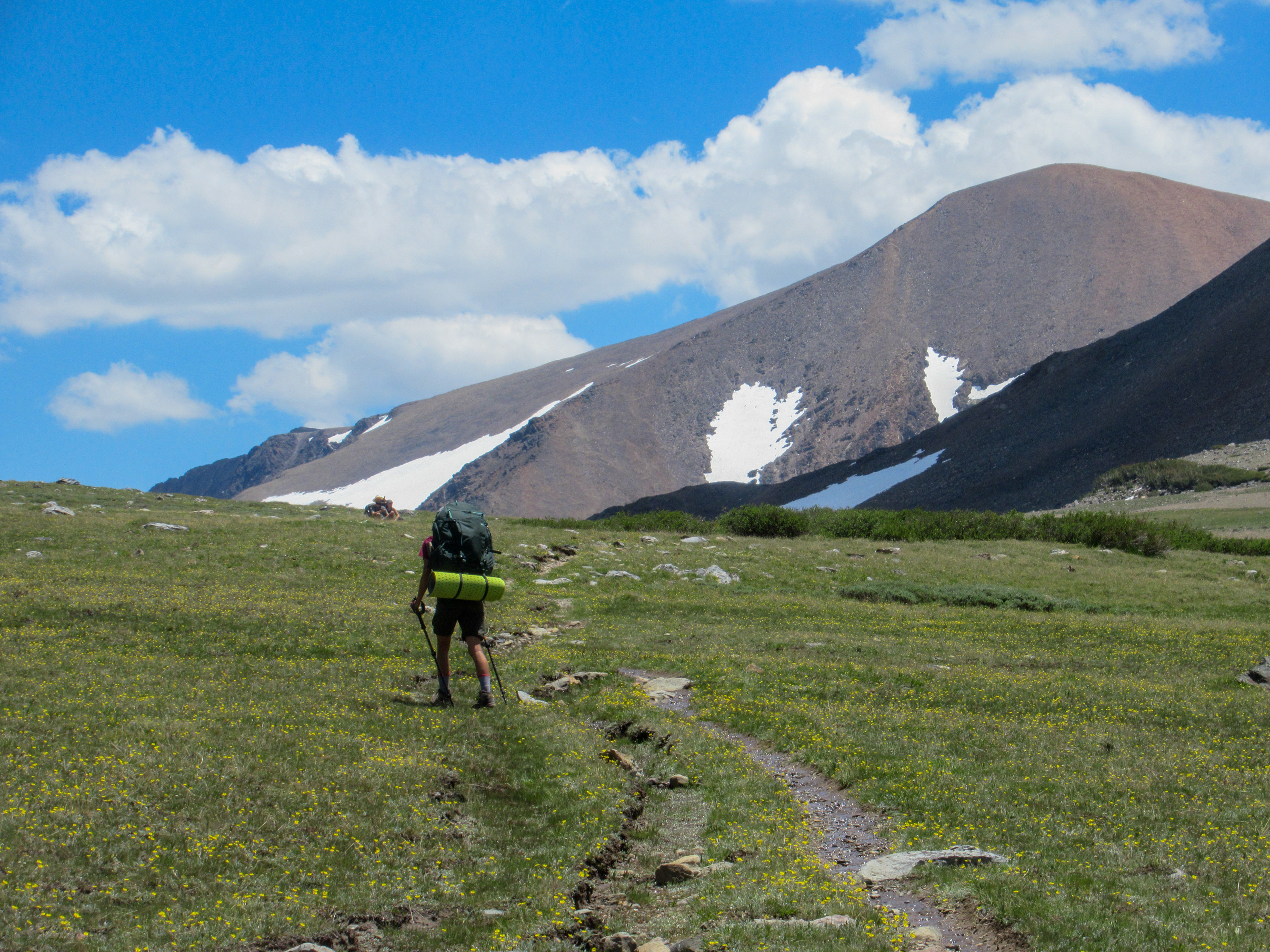
The mosquito invasion
Mosquitos are no joke in the high Sierra. I can attest to this.
The snowmelt creates a plethora of stagnant water that is extremely conducive to their reproduction. Having passed over Parker Pass, I am convinced that a night outside without a tent would lead to death due to mosquitos sucking your blood dry.
There were that many.

The first five miles or so of the hike were a dandy. We strolled through forests, open meadows, and patches of snow while admiring the pristine mountain scenery that surrounded us. It was a steady incline the whole way to the expansive grasslands of Parker Pass, but nothing too exerting. Once we went over the pass was when the mosquitos descended on us in droves.
"The mosquitos could bite through your clothes"
Now, I’ve been to many tropical corners of the world where mosquitos are a real annoyance, but I’ve never seen mosquito swarms as thick as what I saw over Parker Pass. When I had become overrun by the insects, I quickly opened my bag and began throwing on clothes to act as a barrier. That hardly helped, as the mosquitos could bite through your clothes anywhere that they were flush against your skin, such as your shoulder blades.
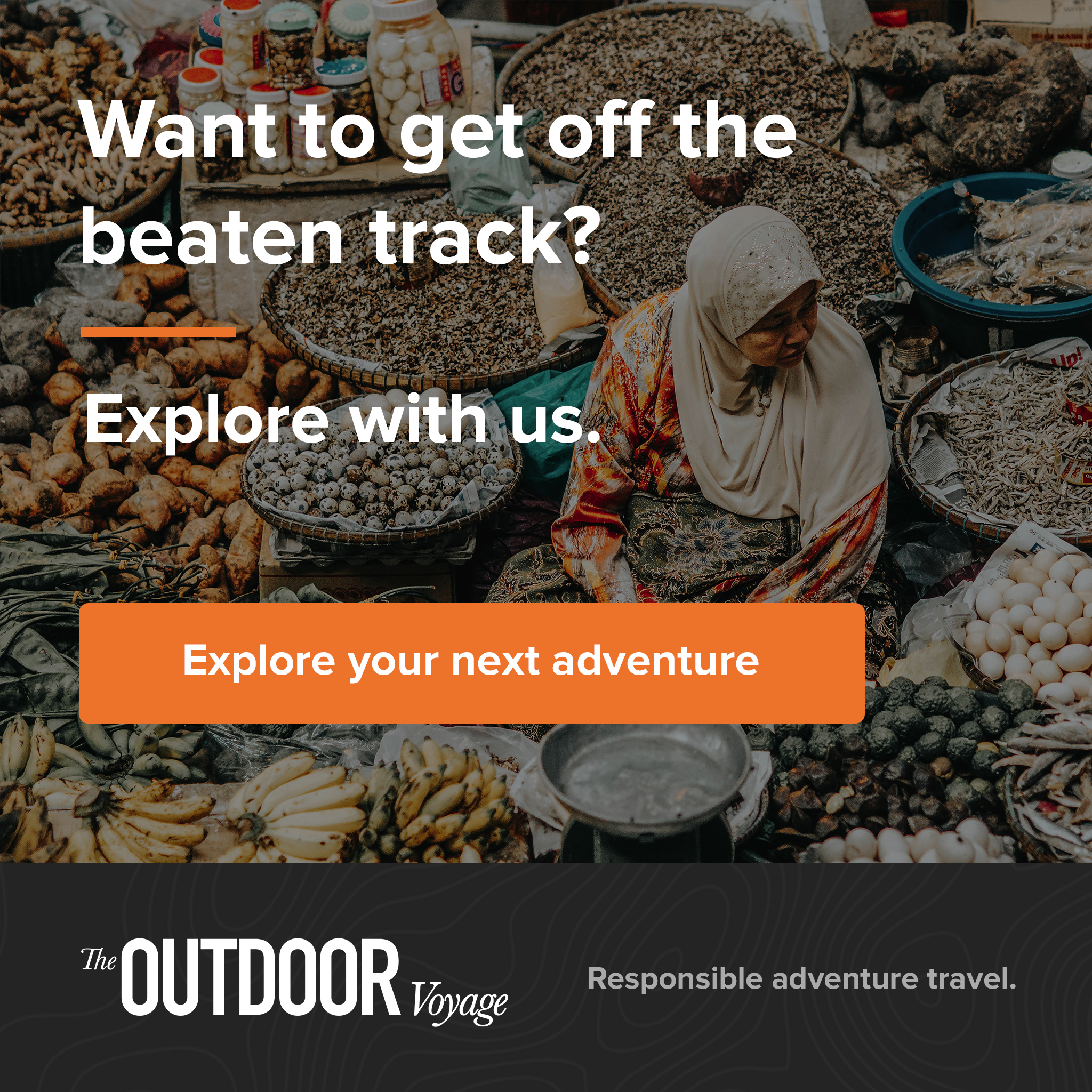
We had only a rough destination in mind, just looking for a nice place to camp in the general vicinity. Overwhelmed by the mosquitos, we settled on a rocky hill overlooking an ice-cold lake at the end of the pass. The campsite had incredible scenery, but its qualities were less than ideal in that the ground was sharp and uneven with loose rocks.
Out of desperation we threw up our tents and jumped inside to eat lunch and take a break from the incessant mosquito attacks. Once my blood wasn’t being removed from my body, I could relax and enjoy the peaks that surrounded us and lake that sat just below us. It was not a bad place to take a nap.
We got comfortable in our new home, continued to battle the persistent attacks from our insect cohabitants, made some meals and tried to get some rest for a big day of hiking ahead of us.
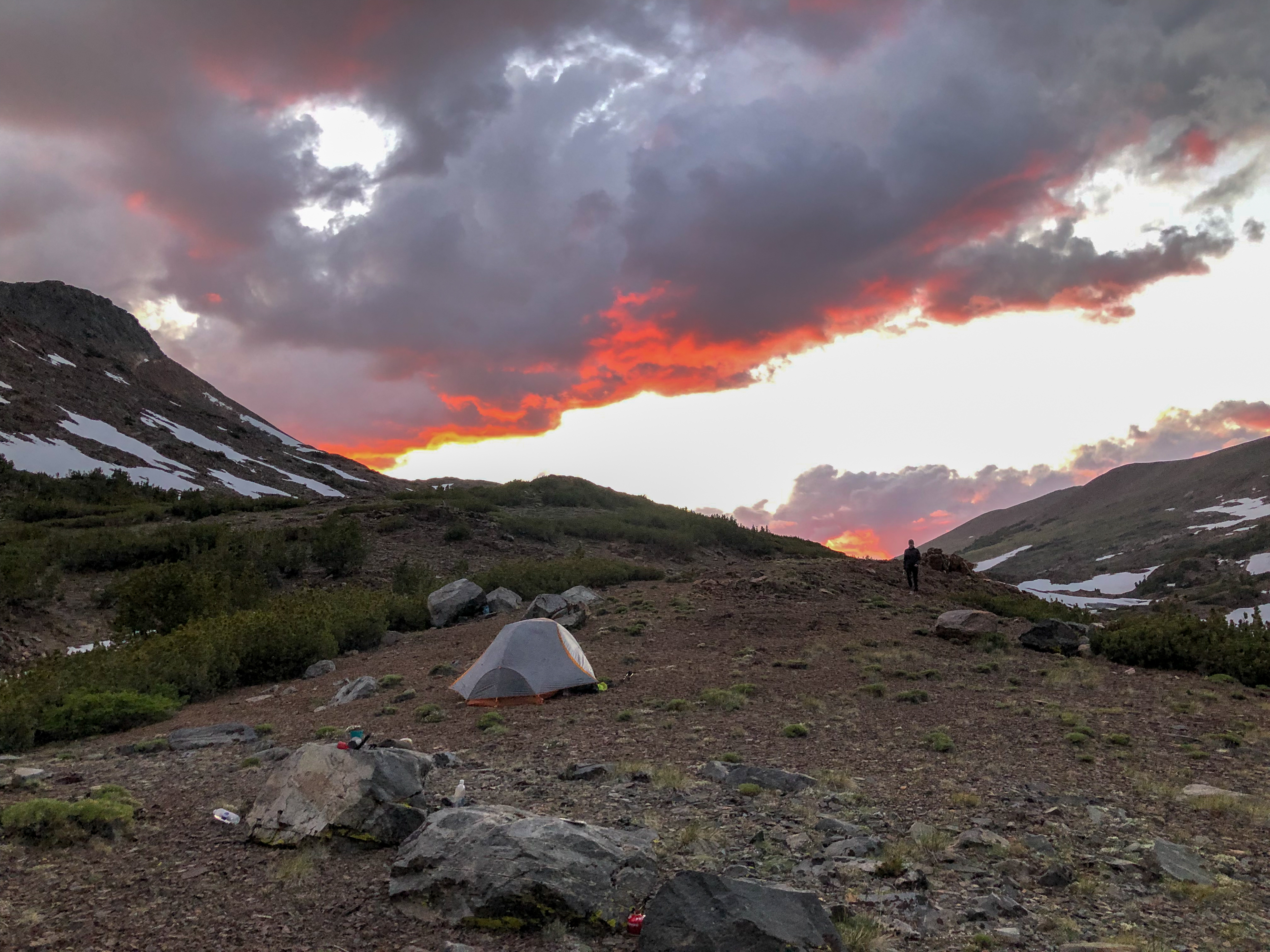
A new record high
During our first night spent out in the wilderness, I woke up early to try to get a glimpse of the Milky Way. I was disappointed to find that the stars were nowhere to be found, blocked by an impressively bright waning moon. Having missed my chance for stargazing, I got out of my tent in the dark to watch the rising sun illuminate the mountain ranges of Nevada to the east.
Sunrise watching was followed by exploring some nearby waterfalls and then documenting all the wildflowers that grew in the area.
[gallery type="rectangular" size="full" link="file" ids="13242,13243,13244,13245,13246,13247,13248,13249,13216"]
I’ve always been an early bird since I was little, so I am accustomed to killing time in the wee hours of the morning. Best of all, I was pleasantly surprised to emerge from my tent in the morning to discover that the mosquitos were nowhere to be found.
My elation was cut short as soon as the first sliver of sun shone over the horizon. The mosquitos returned in full force and I retreated into my layered clothing.
As the rest of the group began to rise, we prepared for our day. Our plan was to summit the nearly 13,000-foot Koip Peak, return to camp, pack up, and head back over Parker Pass to Upper Sardine Lake. It was definitely going to be a tougher hike than what we did the previous day.

We took only our bear canisters and water to Koip Peak, leaving the unnecessary weight behind. To reach the peak, you need to go over Koip Peak Pass — a series of 22 switchbacks carved by humans in loose scree that get you onto the ridge. From there, it’s a trail-less scramble up the side of Koip Peak to reach the summit, which sits at 12,968 feet above the sea.
I realized that I was going to break a new record of personal elevation. I had hiked the 11,500 foot Graveyard Peak in the Sierras the year before, but I had never stood on land above that elevation. I set off from camp intending to add another 1,500 feet to my personal record for elevation.
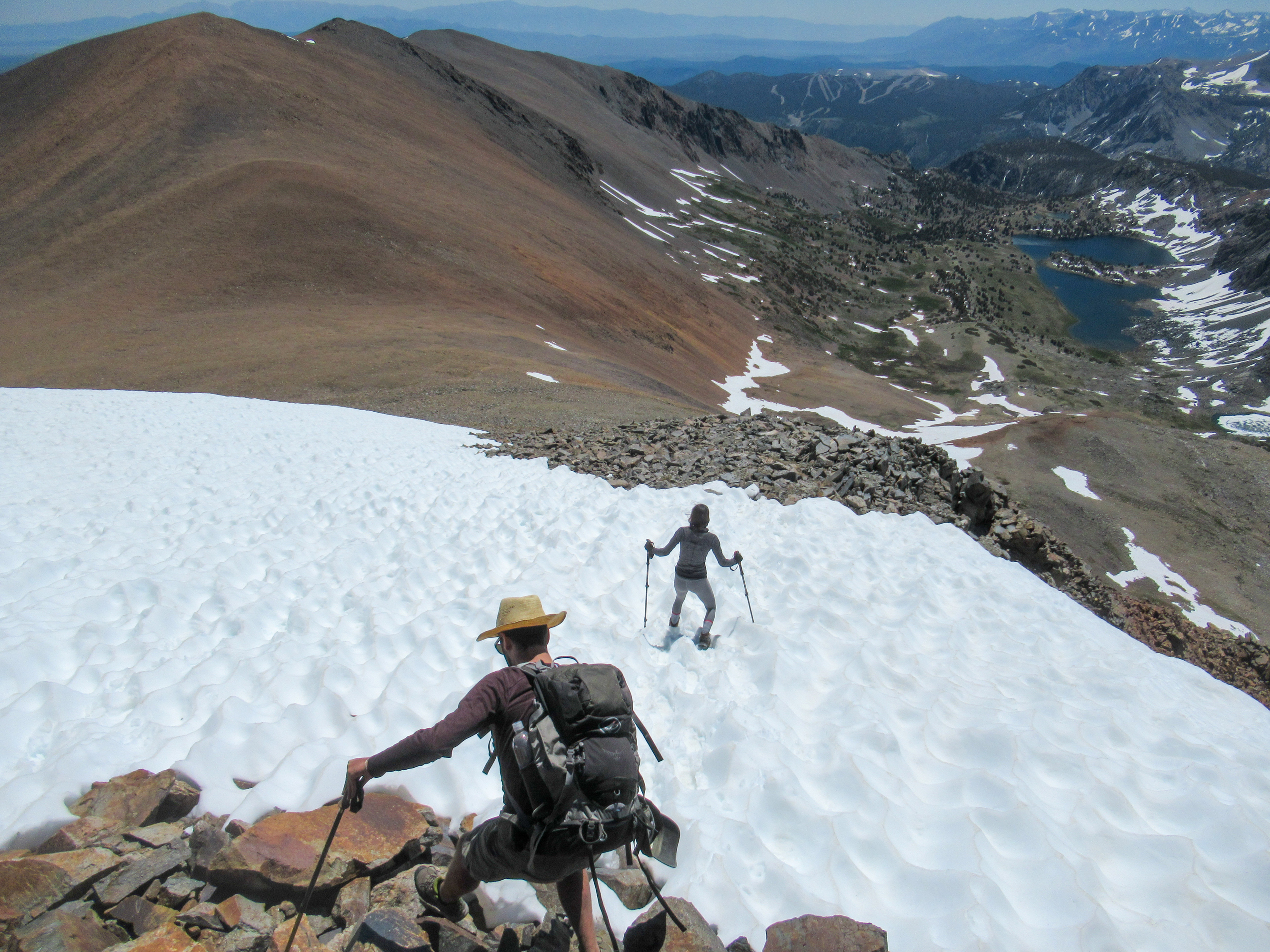
In need of a bath at Upper Sardine Lake
By the time we summited Koip Peak and returned to our basecamp, I had been in the wilderness for over 24 hours, surrounded by crystal clear water, and I still hadn’t jumped in the water.
"You don’t go hike in the Sierras to avoid swimming in the lakes!"
For me, that was a problem. You don’t go hike in the Sierras to avoid swimming in the lakes! The problem was that the water on the north side of Parker Pass is part of the Hetch Hetchy watershed — San Francisco’s water source. Going into the water there is a no-go. The lake at our campsite, which was ice cold, but inviting for a swim, was not an option due to the ravenous mosquitos. The ten seconds of drying off with exposed skin would have been greatly regretted.
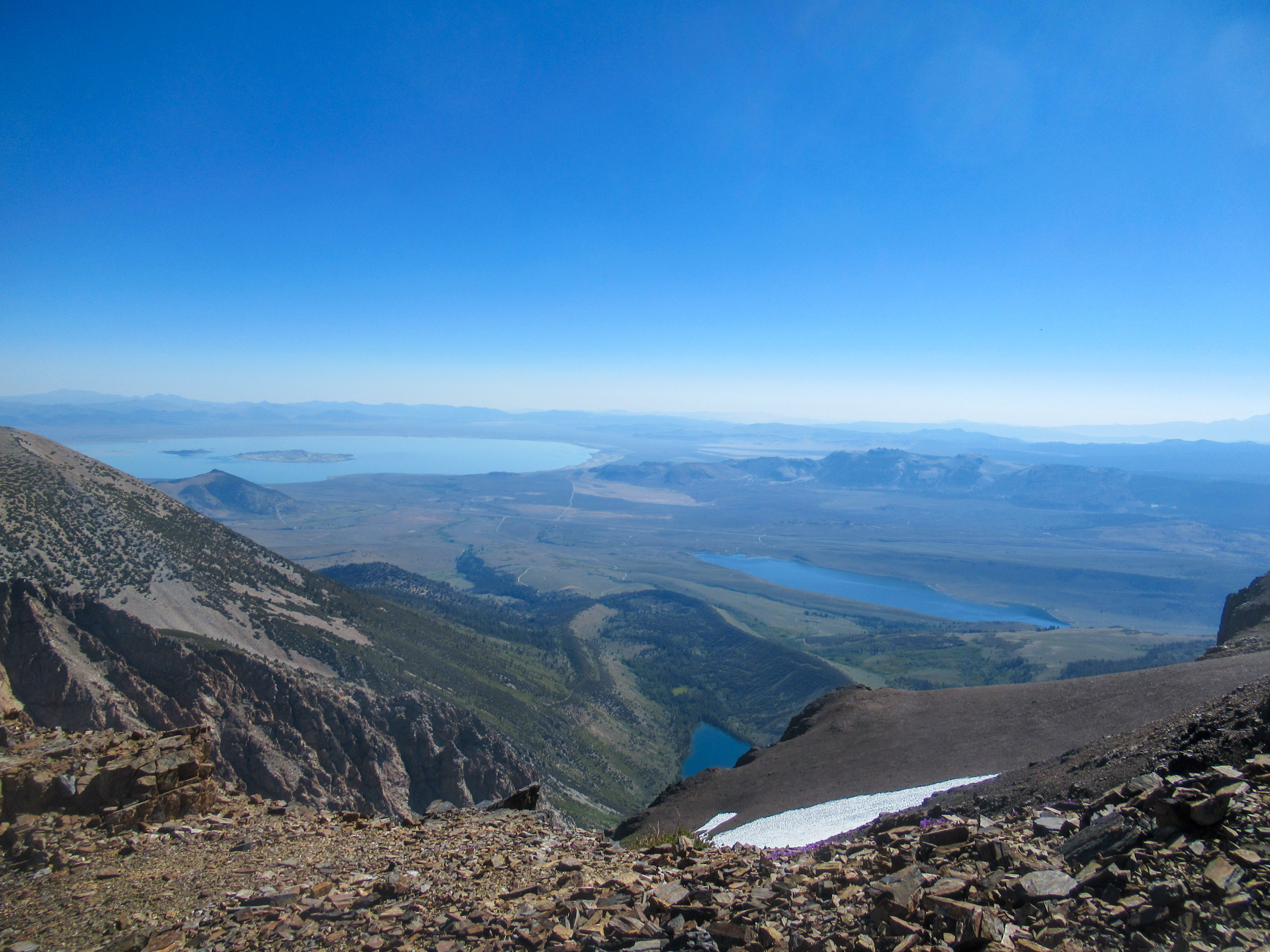
Our next destination was Upper Sardine Lake, where I was hoping I would get my first bath and chance to jump in a water hole.
We were to retrace our steps back over Parker Pass, hang a right to the east, crossPass, and continue on to the slightly lower elevation at Upper Sardine Lake, a lake which we had heard contains fish.
What a difference 24 hours can make.
The same section of Parker Pass where we had been devoured by mosquitos the day before, this time was mosquito-free. It was probably due to the slight breeze that causes the mosquitos to look for cover. We could hike comfortably in short sleeve shirts, which is a major plus, and traveled the six miles or so to Upper Sardine Lake, which sits lower at about 10,300 feet. We were able to find a much more adequate campsite on soft ground and I took a refreshing dip in the sandy edge of the ice-cold lake. That bath could not have come a second sooner.
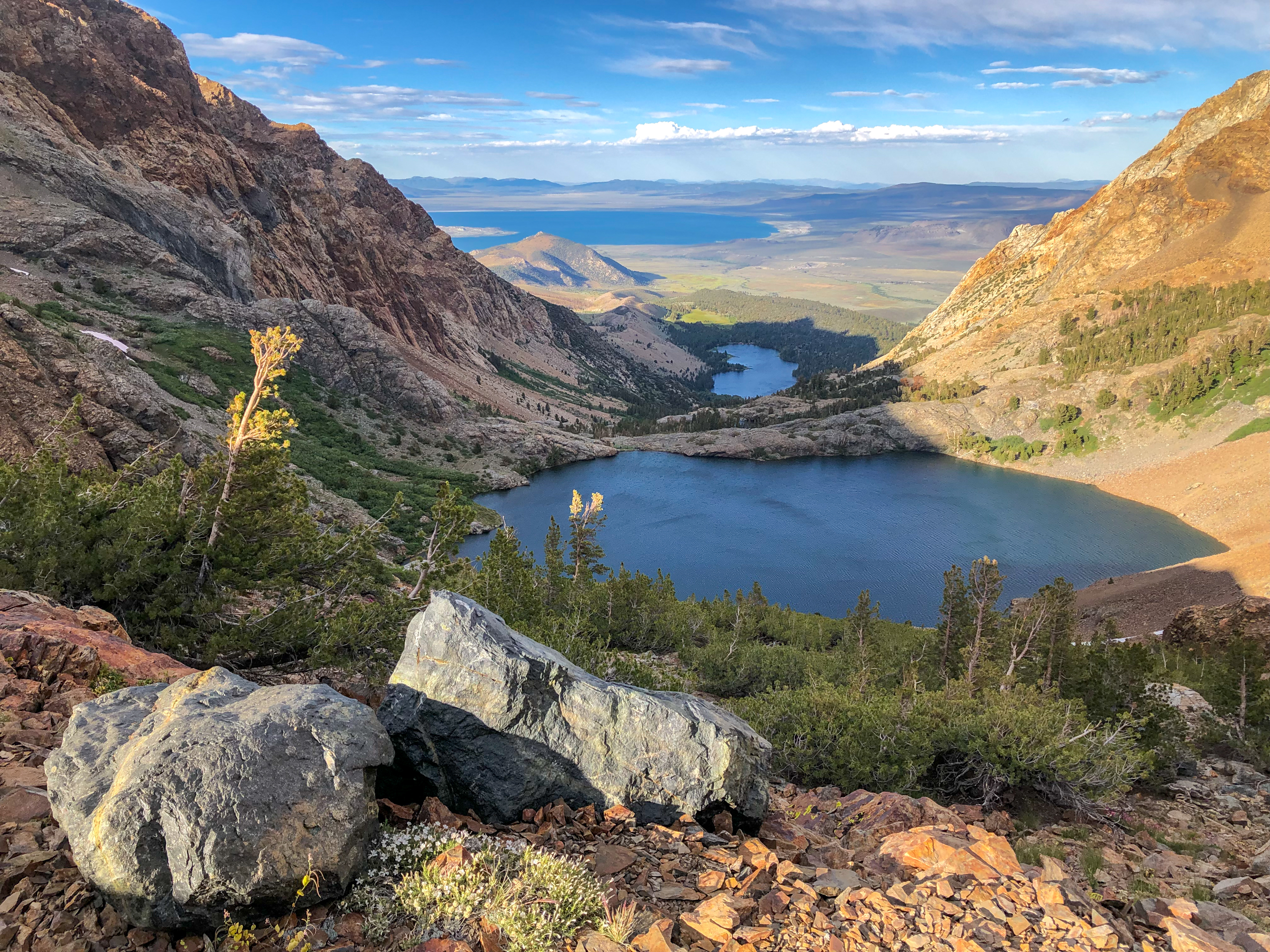
Another group of campers were already established in the trees on the east side of the lake, so as to not bother them we set up camp on the north shore of the lake. Mosquitos were at a manageable rate and outside temperature was nice and mild — a perfect night to be spent under the stars. We cooked our meals and slid into our cozy sleeping bags, exhausted from a full day of hiking.
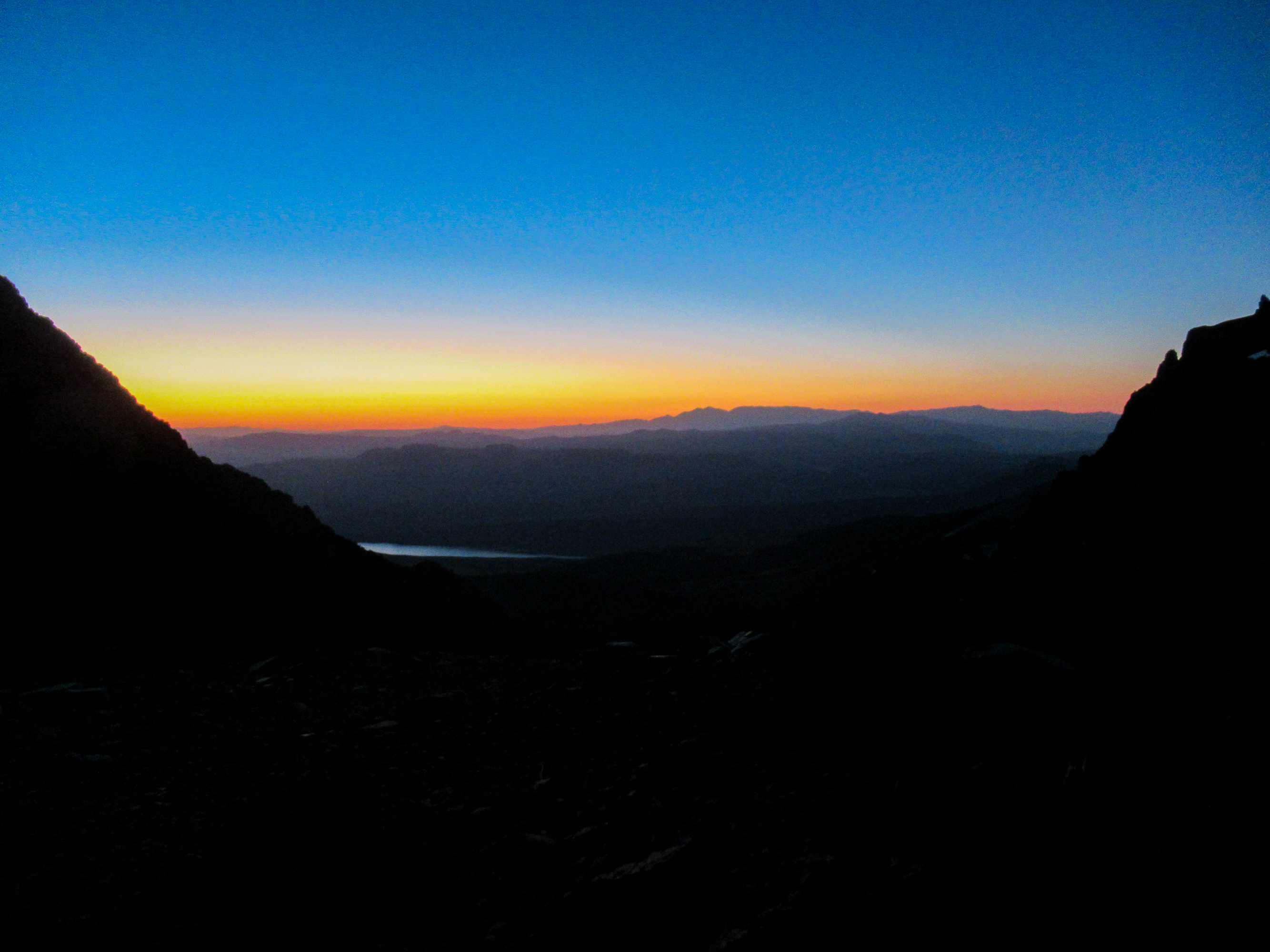
A successful expedition in Yosemite’s backcountry
Day three was our last day of the trip, requiring just a quick four-mile, mostly downhill hike back to the parked cars before we commenced our day of driving back to our various locations — Santa Cruz for Anne, Santa Barbara for Kai and Kiara, and San Diego for myself and Madison.
Like the previous morning, I woke early to explore a bit of Upper Sardine Lake. I crossed a stream, walked to the other side, and discovered a little pond that was out of view from our campsite’s perspective. There were some new wildflowers around this lake that I hadn’t seen on the rest of the hike, so that was nice to find. Before packing up and heading back home, I went for a final dip in the lake. The water had significantly cooled overnight and the ice plunge was more shocking than the previous afternoon.

Kai and Kiara gave fishing another try, and got a few bites, but nothing was ever reeled in. Our time in Yosemite had come to an end, but our mission was certainly accomplished. We had managed to scale the world-renowned Half Dome in Yosemite Valley, and then escape to a not-so-distant solitude that felt like it was lightyears away.
I don’t get flustered about the crowds in Yosemite. Anyone who has ever laid eyes on the valley walls can attest to the mystical allure that keeps visitors coming back. It surely keeps me coming back, and it never fails to impress me.
I suppose what I learned from this trip was more of a confirmation, that outside the well-trodden trails of Yosemite lie other roads less traveled. Roads that provide just as much beauty and excitement, roads that are certainly worth exploring.

This article first appeared on the author’s website: www.evanquarnstrom.com. All photos are by Evan Quarnstrom.












